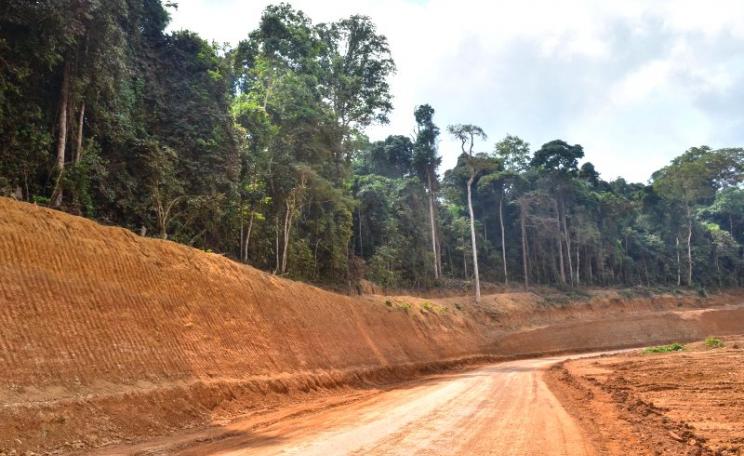Since the end of World War II and continuing through the 1980s, two main drivers – rapid population growth and government policies – were the biggest direct causes of tropical forest destruction. As shown by Oxford University ecologist Norman Myers, most forest-loss at this time resulted from rising numbers of shifting cultivators and rural farmers. These increases, along with government tax incentives, agricultural loans and road-building, led to dramatic influxes of colonists into remote frontier areas.
More recently, however, the impacts of rural peoples on tropical forests seem to be stabilising, and if such trends continue they could begin to alleviate some of the pressures on forests from small-scale farming, hunting and fuel-wood gathering.
At the same time, globalised financial markets and a worldwide commodities boom are creating a highly attractive environment for profit-seeking corporations and wealthy landowners. Surging demand for grains and edible oils, driven by the global thirst for biofuels and rising standards of living in developing countries, is also spurring this trend. In Brazilian Amazonia, for instance, large-scale ranching has exploded in recent years, with the number of cattle more than tripling (from 22 to 74 million head) since 1990, while industrial soy farming has also grown dramatically.
Other industries, especially logging, mining and oil and natural-gas development, are also playing a serious but indirect role in forest destruction. These provide a key economic impetus for forest road-building, which in turn allows influxes of colonists, hunters and illegal miners into frontier areas, often leading to rapid forest disruption and destabilising cycles of land speculation.
While the recent surge in industrial-scale deforestation is alarming, it also signals opportunities for forest conservation. Rather than attempting to influence hundreds of millions of forest colonists in the tropics – a daunting challenge – conservationists are increasingly focusing their attention on a vastly smaller number of resource-exploiting corporations.
Today, few corporations can safely ignore the environment. A growing cadre of conservation groups is targeting corporate sinners, mobilising support via consumer boycotts and public-awareness campaigns. For example, following an intense public crusade, Greenpeace recently pressured the largest soya-crushers in Amazonia to employ a moratorium on soya processing, pending establishment of a tracking mechanism to ensure their crop is coming from environmentally responsible producers.
Earlier boycotts by the Rainforest Action Network (RAN) prompted several major US retail chains, including The Home Depot and Lowe’s, to change their buying policies to favour more-sustainable timber products. Under threats of adverse publicity, RAN has even convinced some of the world’s biggest financial firms, including Goldman Sachs, JP Morgan Chase, Citigroup Inc and Bank of America Corp, to modify their lending and funding practices for forestry projects.
The impacts of such activities are far from trivial. Corporations perceived as environmental bad guys can see their market shares plummet; Asian Pulp & Paper, widely criticised for promoting forest destruction in southeast Asia, has had its supply contracts cancelled by major retailers such as Office Depot, Wal-Mart, Staples and Woolworths.
Many industries, motivated in part by fear of negative publicity, are establishing coalitions that claim to promote environmental sustainability among their members. Examples include Aliança da Terra for Amazonian cattle-ranchers, the Roundtable on Sustainable Palm Oil in southeast Asia, and the Forest Stewardship Council (FSC) for the global timber industry. Conservation groups are increasingly homing in on these coalitions.
Rather than trying to monitor hundreds of different corporations, conservationists can have a big impact by striking just a few industrial pressure points. For example, Greenpeace recently revealed that food giants such as Procter & Gamble, Nestlé and Unilever were using palm oil grown on recently deforested lands, despite assurances to the contrary from the Roundtable on Sustainable Palm Oil. Likewise, the FSC has come under fire from environmentalists as well as the Wall Street Journal for a variety of perceived sins, such as sanctioning destructive forestry operations in Sumatra.
Corporations are also being swayed by carrots as well as sticks. ‘Green’ timber products accounted for $7.4 billion in sales in the US in 2005, and are expected to grow to $38 billion by 2010. Support for eco-certified products is even stronger in the UK and Europe. Unfortunately, many suppliers in the tropical timber industry, including China, the world’s largest exporter of furniture and other wood products, are largely missing out on this growing market niche.
Conscientious consumers can take at least three steps to help save the rainforests. First, learn about rainforest issues by joining one of the conservation groups – such as RAN, Greenpeace, Friends of the Earth, Rainforest Alliance and WWF – actively battling forest-destroying corporations. The website www.mongabay.com is also a highly topical source of information.
Second, vote with your wallet. Think long and hard before buying wood products manufactured in China, far too many of which are made from illegally and unsustainably harvested wood, with minimal benefits for timber-producing countries. I would avoid Indonesian timbers entirely.
Third, get involved in environmental campaigns. Conservation groups often sponsor letter-writing campaigns to corporations and to political decision-makers, and a variety of other public actions. One motivated individual is worth 10,000 apathetic consumers. You can make a difference – and help turn up the heat on corporate offenders that are imperilling the world’s rainforests.
William Laurance is a biologist at the Smithsonian Tropical Research Institute in Pananma
This article first appeared in the Ecologist November 2008







